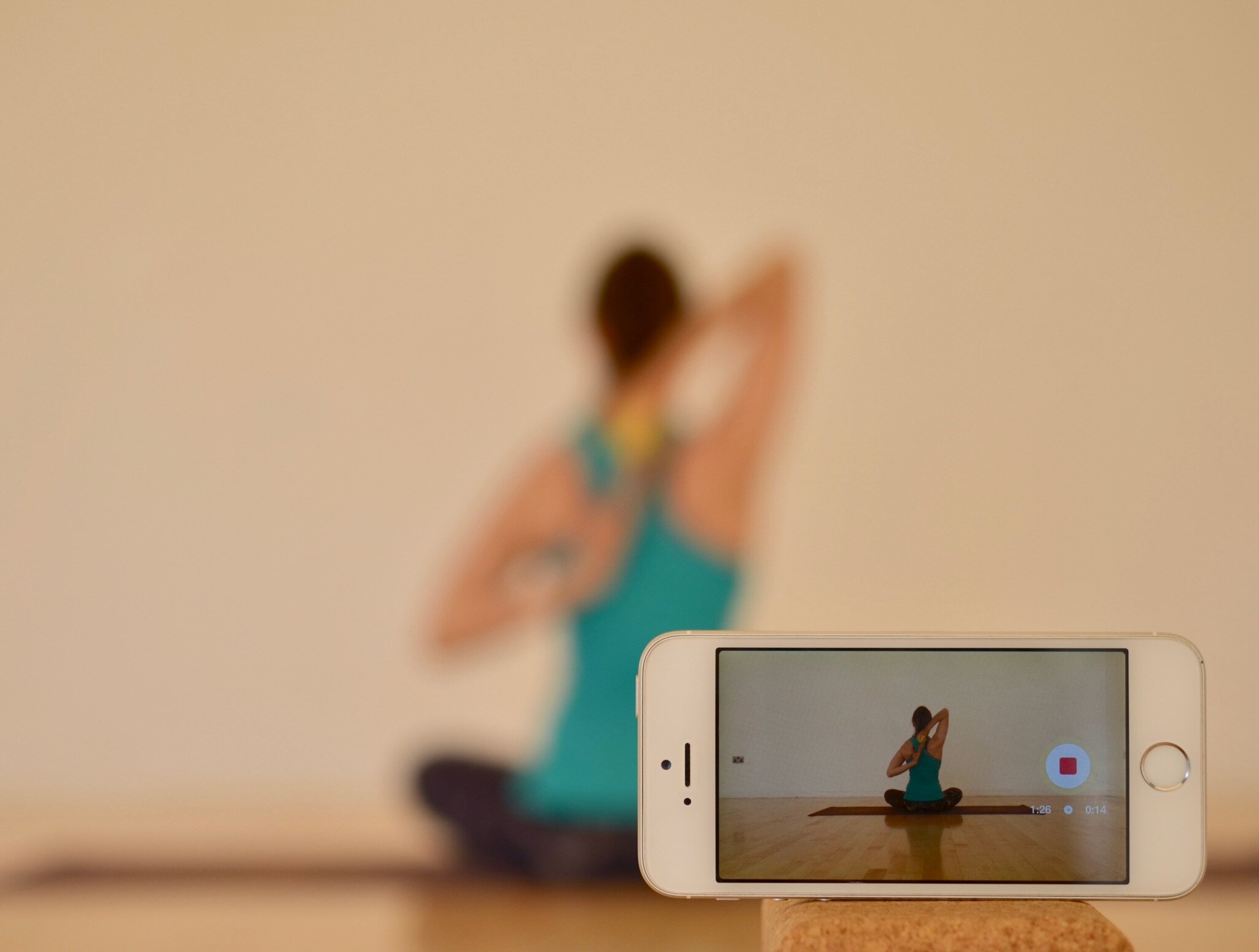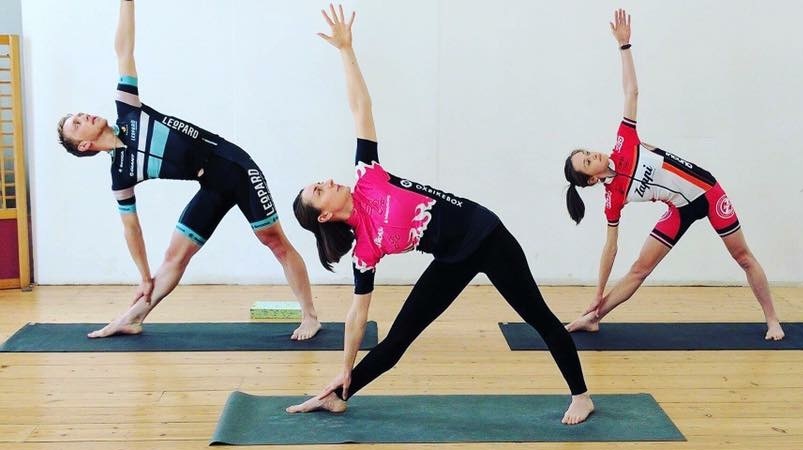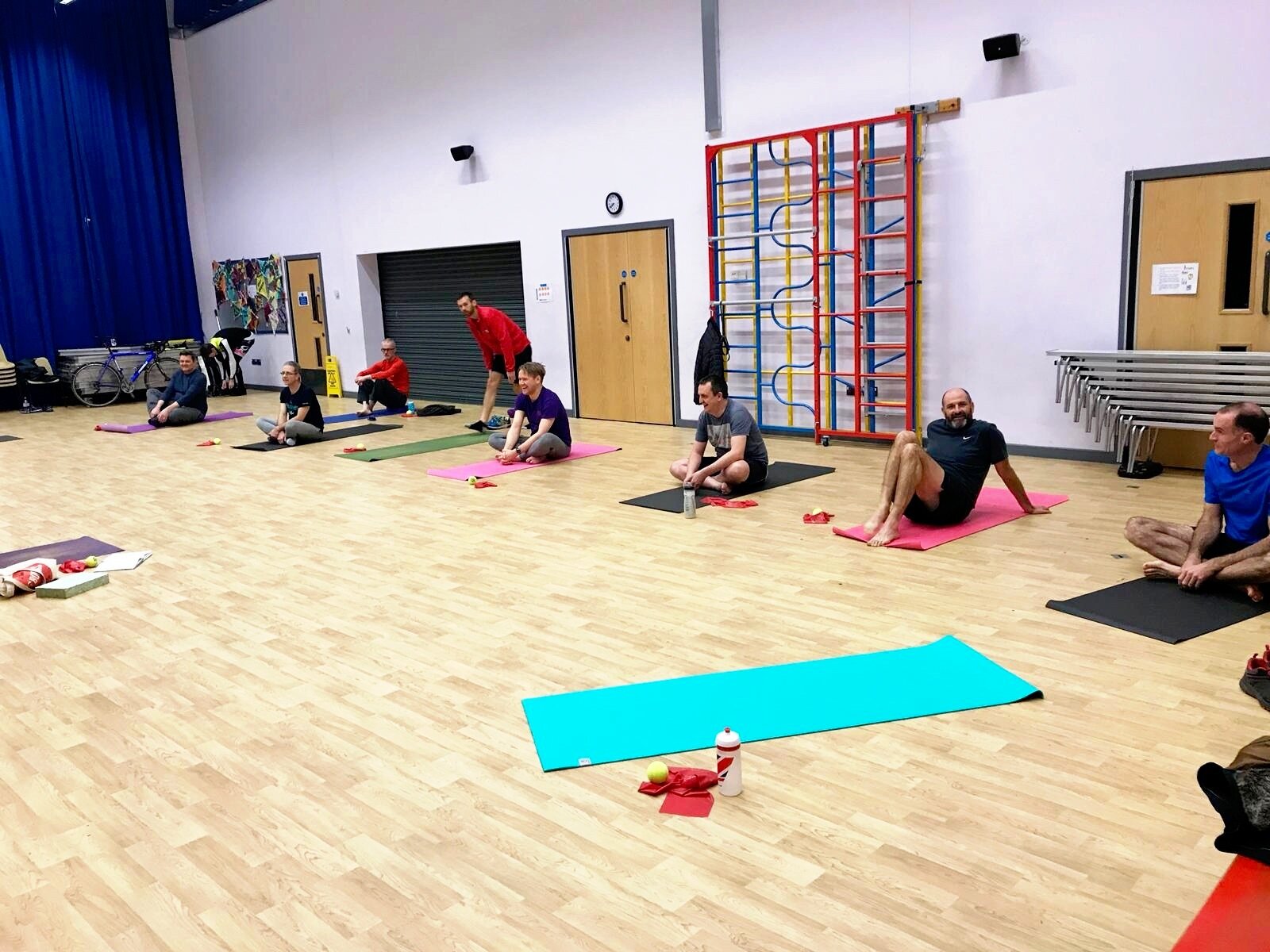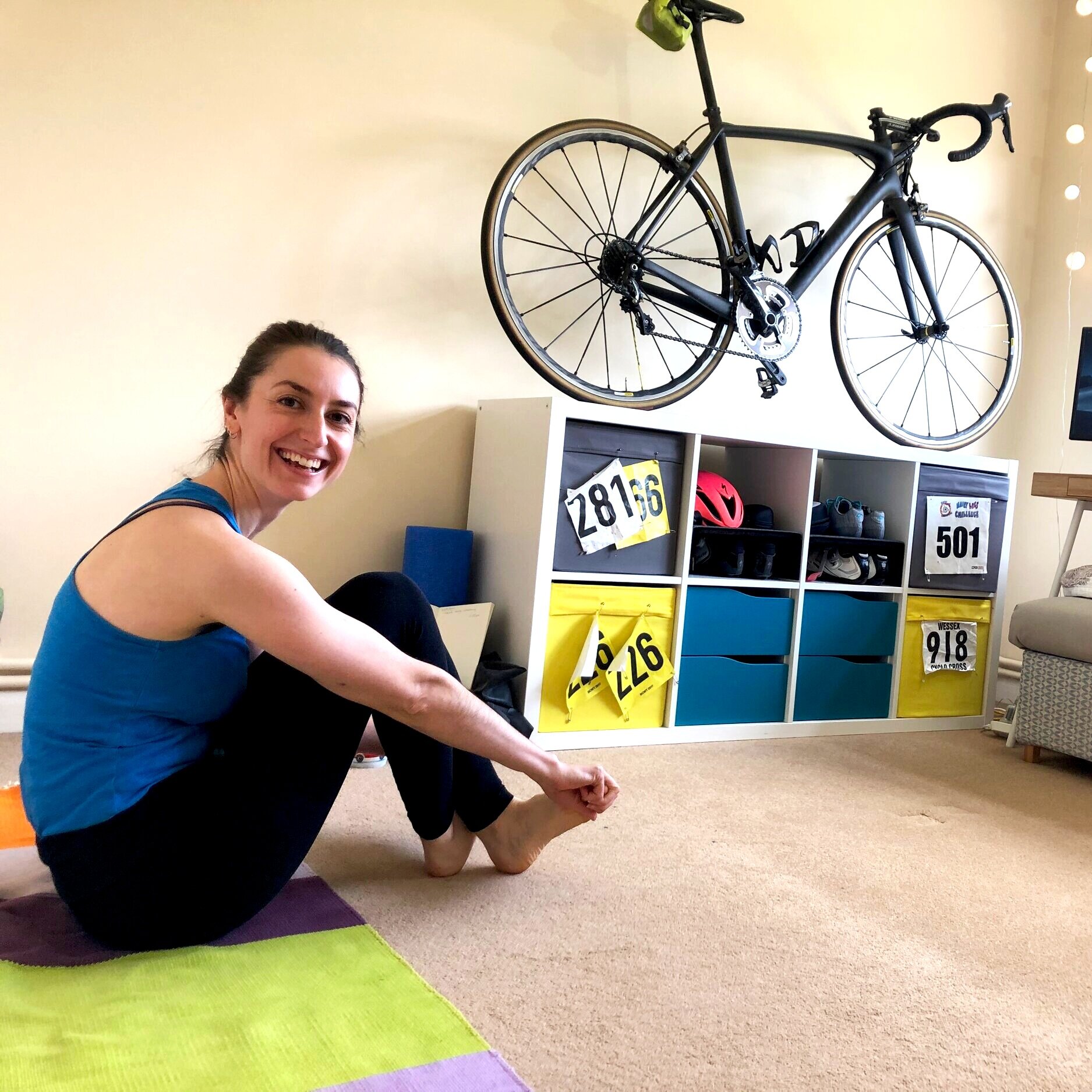



Why ‘for cyclists’?
Our bodies are made to move in many different ways. When we habitually repeat the same kind of movements and focus our ‘exercise’ on a particular type of activity, or sport, our bodies learn to move in limited ways.
When we cycle: the spine spends a lot of time in a rounded position, bottoms (and bits!) spend a lot of time pressing down on (and being supported by) a saddle; hands move around, but ultimately rest on the handlebars, and – depending on cadence – knees and ankles can repeat the same set of movements up to a hundred times every minute. Unless something disastrous occurs, the movements we make when cycling happen in a forwards direction.
Enviable thighs and calves aside, if cycling is our predominant activity, there is less opportunity for our bodies to bear weight, develop strength, and improve (or maintain) mobility, balance, and resilience in a greater variety of positions.
Guiding concepts
Cycling is a repetitive, low-load, and short range of movement activity.
Muscles recover faster than the nervous system.
Exercise is only one type of ‘movement’; and ‘fitness’ is not the same as ‘exercise’.
Your course
Your course will be live-streamed each week via Zoom.
Each session will begin with a short introduction and discussion. You will experience at least 40 minutes of guided whole-body movement designed to develop and improve balance, mobility and strength. There will be at least 10 minutes to explore a range of methods to assist relaxation and help you unwind.
Video library access
Each class will be recorded and made available to registered participants until the end of March 2021. Classes will be uploaded each Tuesday following the livestream. If you sign-up for video library access only, your first class will be available from 17th November, your final class will be available by 22nd December.
This course is suitable for:
complete beginners
casual, commuting and competing cyclists
incorporating into a winter training plan
You will learn ways to:
improve balance, strength and mobility outside of a gym environment
prioritise rest, promote recovery and avoid overtraining
develop a sustainable, independent and personal yoga and movement practice
Equipment
In addition to a yoga mat, 2 cork/foam blocks (or chunky books), any small weight you can hold in your hand (under 2kg), a resistance band (or belt), massage ball (or tennis ball/foam roller) may be nice to have, but not essential. We can be creative with what you have at home.
How to join
You will receive an automated confirmation email after booking. You will receive a second email containing all of the essential joining information on Monday 9th November. The password and secure link to access the video library will be sent on Tuesday 17th November.
Any questions? Contact me.